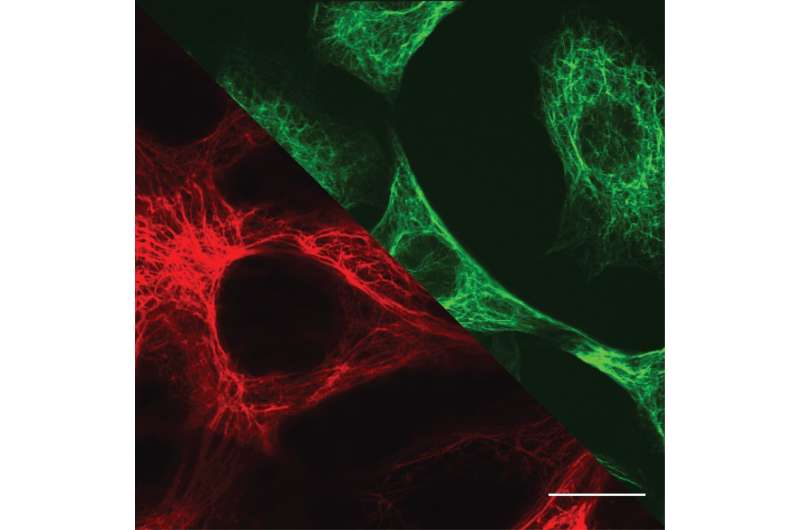This article has been reviewed according to Science X's editorial process and policies. Editors have highlighted the following attributes while ensuring the content's credibility:
fact-checked
peer-reviewed publication
trusted source
proofread
Precisely measuring the differing filamentary cytoskeletal characteristics of mobile and stationary cells

Most biological cells have a fixed place in an organism. However, cells can become mobile and move through the body. This happens, for example, during wound healing or when tumor cells divide uncontrollably and migrate through the body. Mobile and stationary cells differ in various ways, including their cytoskeleton.
This structure of protein filaments makes the cells stable, stretchable and resistant to external forces. In this context, "intermediate filaments" play an important role. Interestingly, two different types of intermediate filaments are found in mobile and stationary cells.
Researchers at the University of Göttingen and ETH Zurich have succeeded in precisely measuring and describing the mechanical properties of these two filaments. In the process, they discovered parallels with non-biological materials. The results have been published in Matter.
The scientists used optical tweezers to investigate how the filaments behave under tension. They attached the ends of the filaments to tiny plastic beads, which they then moved in a controlled way with the help of a laser beam. This stretched the two different types of filaments, which are known as vimentin and keratin. The researchers worked out which forces were necessary for the stretching and how the different filaments behaved when they were stretched several times.
Surprisingly, the two different filaments behave in contrasting ways when repeatedly stretched: vimentin filaments become softer and retain their length, keratin filaments become longer and retain their stiffness. The experimental results match computer simulations of molecular interactions: in vimentin filaments, the researchers assume that structures open up, similar to gels made of several components; in keratin filaments, they assume that structures shift against each other, as in metals.
Both mechanisms explain that the networks of intermediate filaments in the cytoskeleton can be deformed very strongly without being damaged. However, this protective factor is explained by fundamentally different physical principles.
"These results extend our understanding of why different cell types have such different mechanical properties," explains Dr. Charlotta Lorenz, first author of the study.
Professor Sarah Köster, from Göttingen University's Institute of X-Ray Physics and leader of the study, adds, "We can learn from nature and think about the design of new, sustainable and transformable materials whose properties can be chosen or designed to fit the requirements exactly."
More information: Charlotta Lorenz et al, Keratin filament mechanics and energy dissipation are determined by metal-like plasticity, Matter (2023). DOI: 10.1016/j.matt.2023.04.014
Journal information: Matter
Provided by University of Göttingen



















